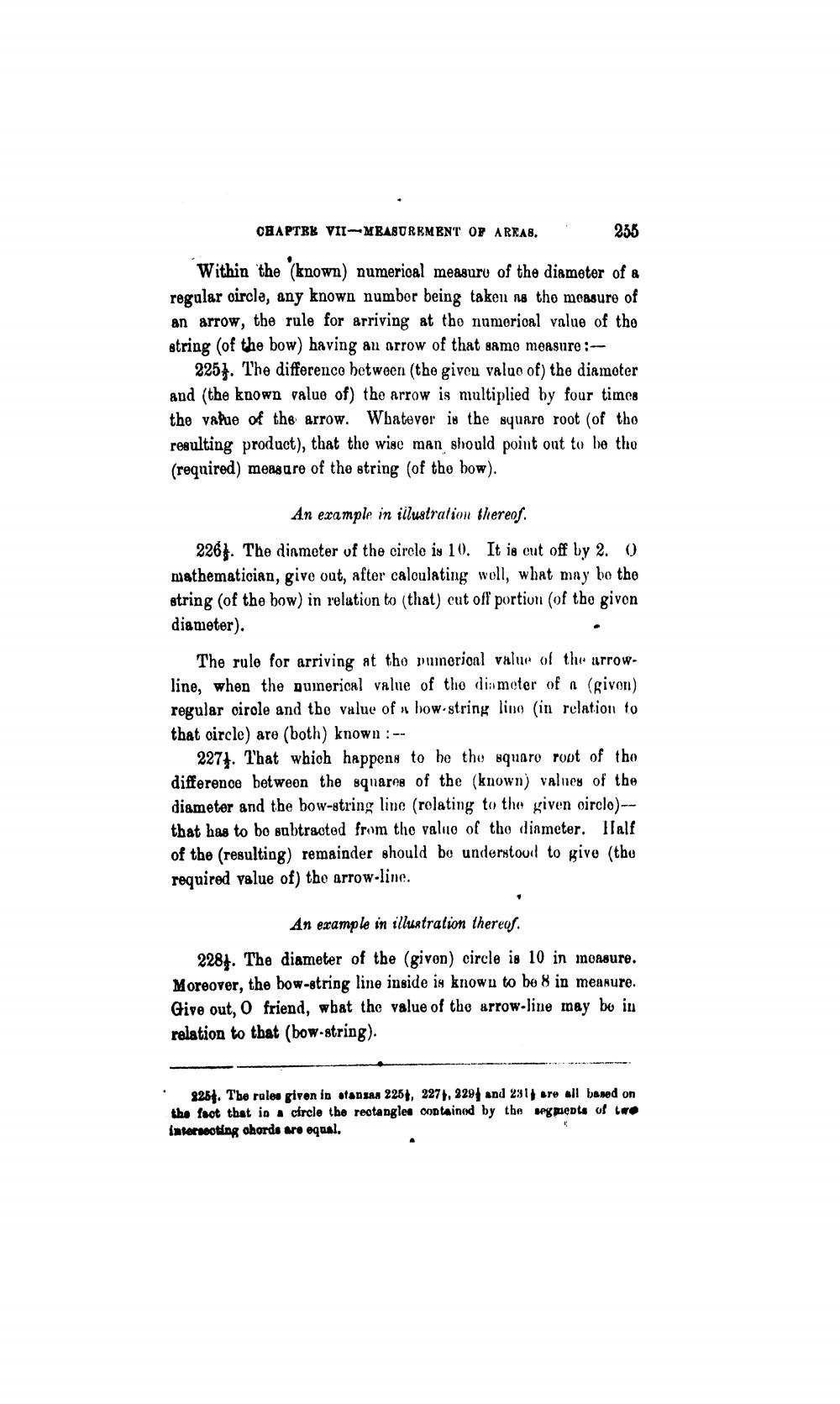________________
CHAPTER VII-MEASUREMENT OP AREAS.
'
235
Within the (known) numerical measuru of the diameter of a regular circle, any known number being taken as the measure of an arrow, the rule for arriving at the numerioal value of the string (of the bow) having an arrow of that same measure : --
2257. The difference between the giveu value of) the diameter and (the known value of) the arrow is multiplied by four times the value of the arrow. Whatever is the squaro root of tho resulting product), that the wise man should point out to be tho (required) measure of the string (of the bow).
An example in illustration thereof.
226). The diameter of the circle is 10. It is cut off by 2. 0) mathematician, give out, after calculating well, what may be the string of the bow) in relation to (that) cut off portion (of the given diameter).
The rule for arriving at tho punerion value of the arrowline, when the qumerical value of the diameter of a (given) regular cirole and the value of x bow-string line in relation to that circle) are (both) known :
2271. That which happens to be the squaro root of the difference between the squares of the (known) values of the diameter and the bow-string line (rolating to the given circlo)-- that has to bo subtracted from the value of the diameter. Half of the resulting) remainder should be understood to give (the required value of) the arrow-line.
An example in illustration thereos. 2284. The diameter of the (givon) circle is 10 in moasure. Moreover, the bow-string line inside is known to be 8 in measure. Give out, o friend, wbat the value of the arrow-line may bo in relation to that (bow-string).
9254. The rules given in stansas 2254, 227), 2291 and 23|| are all based on the foot that in circle the rectangles contained by the segments of two intersecting ahords are equal.




